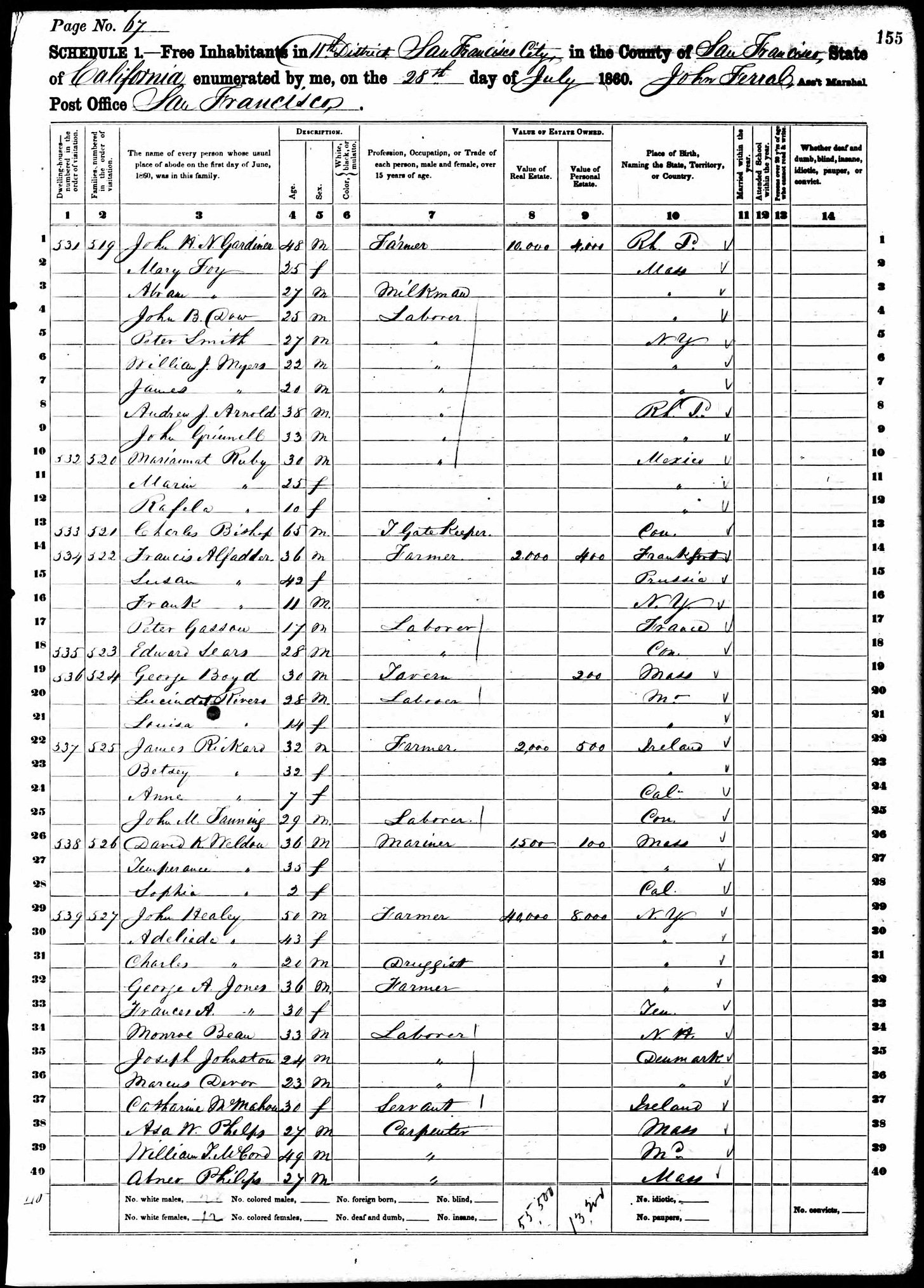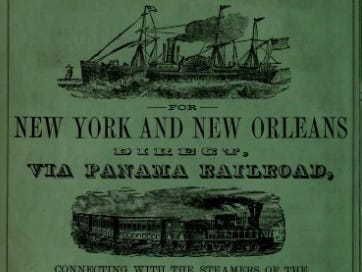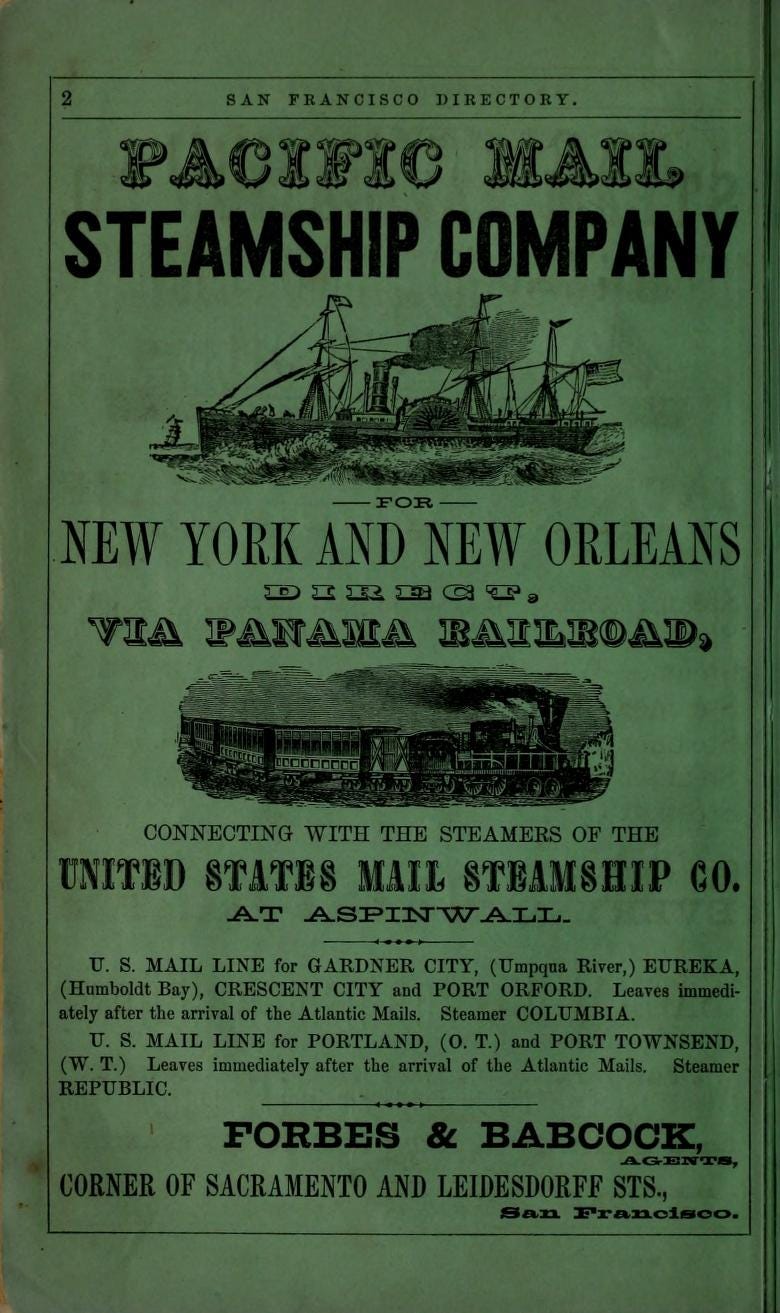Miscellany Mondays: The search for Asa W. Phelps continues...details about his life in California and Silver City, Nevada
I was drawn to Asa’s story by the words “grave” and “ghost town” leaping out from the pages of an old Andover Townsman. Join me on my search for Asa Phelps!
Welcome or welcome back to History Buzz! If you’re a subscriber to the Buzz, thank you! If you’re new here, or you haven’t become a subscriber yet, please sign up for a subscription to have History Buzz delivered directly to your inbox.
The search for Asa W. Phelps continues . . .
Asa W. Phelps was born in Andover in 1834. He died in Silver City, present-day Nevada on October 28, 1862. His headstone caught the eye of an Andover expat in the 1950s. And, I was drawn to Asa’s story by the words “grave” and “ghost town” leaping out from the pages of an old Andover Townsman that has been sitting in the History Center’s basement.
In my earlier post on Asa (click to follow the link), I shared what I could piece together from his life in Silver City. He helped formalize the Silver City Guards, owned a house lot and perished from a fever. But, I still had questions. Was Asa a successful miner? Or, did he make his money as a carpenter? Did Asa have a wife, or a sweetheart? When did he leave Andover? And, the most thrilling question (for me), how did Asa travel to the west coast?
My first stop was, predictably, the United States Census. On August 17, 1850, a census-taker listed Asa as being a 16-year-old resident here in Andover. His father Joshua, was a farmer.
When the 1860 census rolled around, Asa was in San Francisco. More on that later.
I diligently searched Memorial Hall Library’s online archive of the Andover Advertiser (click to follow the link). I started with the issue nearest Asa’s death and worked backwards, all the way to 1853.
The digitized Advertiser is divided into easily searchable PDF files. I still had to weed through many mentions of the various Phelps to find Asa. Namely, Professor Austin and his numerous sermons and publications. Asa’s father, Joshua, is listed as being part of a committee from time to time. The Advertiser’s February 26, 1859 issue lists Asa as a miner living out in California.
My greatest find is a letter from Asa that was published on May 25, 1861 (click to follow the link). He detailed his trip from San Francisco to Silver City. Asa left San Francisco on Christmas Eve 1860, in the company of a Mr. Smith, no first name given. Asa wrote of Smith: “My friend having been here in July lust, and speaking so flatteringly of the many chances for money-making, I thought I would try my luck.”

Asa and Smith traveled to Sacramento on a steamship and took the train to Folsom. From Folsom, they transferred to a stagecoach. Asa’s descriptions of the people and hospitality is fascinating. A married couple was traveling with him in the stagecoach. The husband took frequent sips of an adult beverage. The wife did not approve. Asa noted, chauvinistically, that “She was one of the sort of women who like to wear the breeches, but could not fully accomplish it.”
After hanging around for three days in a place called Placerville, Asa and Smith started walking. The snow was too deep for the stage coaches to get through the mountains. Like a few other folks from Andover, Asa was something of a food critic. An establishment named Scotch Bill’s did not live up to the rave reviews of other travelers.
It is my impression the pork had been salted since 1849. We also had beautifully scented butter, strong enough to perfume a whole neighborhood ; coffee which would have served better as food than a beverage, it being thick as mud ; and dried apple pie, with crust designed to sharpen the teeth if not break them
Asa did not yet have a home in Silver City. He and Mr. Smith boarded in Allen’s Hotel when they finally arrived. At the end of his letter, Asa promised to write again with a detailed description of Silver City, its inhabitants, and its mines. If Asa sent another letter, it was lost in transit. I am just realizing how little time Asa had to make his mark on Silver City. Between his arrival in January 1861 and his death in October 1862, he purchased land and received credit for improving the local militia unit. Perhaps he knew more about this place called Silver City than he let on?
To misquote a noted football authority and Phillips Academy student: On to San Francisco. Gold was discovered nearby in 1848 and, ultimately, 300,000 people rushed to California in a very short time. San Francisco became the unofficial port and depot of the gold rush. Its population ballooned from 200 in 1846 to 36,000 in 1852. San Francisco has been described as “lawless” during that period. Six major fires happened between 1849 and 1851 alone. I wouldn’t be surprised if Asa’s lodgings burned while he was there.
There are digitized San Francisco city directories available online. I could not find Asa listed in the late 1850s. That is not surprising, to be honest. San Francisco’s rapid growth and chaotic conditions made life difficult for anyone, let alone somebody trying to compile a directory. One of the directory editors acknowledged that people living in the city may have been reluctant to speak with the person asking for their information.

Asa was enumerated, documented, by a U.S. census taker on July 28, 1860 as a carpenter living in San Francisco’s eleventh census district. I searched unsuccessfully for Asa under “builder” and “carpenter” in the San Francisco directories as well as by name. The census records contain dwelling numbers and “family” numbers. Families could refer to people in a boarding house or, perhaps, unrelated roommates.
Enumeration district maps describe the boundaries of census districts and can help a researcher turn dwelling numbers into an approximate address, or vise versa. The bad news (for me) is that the 1860 census maps are hard to access, if they exist at all. Tom Carey at the San Francisco Public Library replied to my e-mail at lightning speed and gave me an approximate location of Asa’s residence.
Asa lived in Hunter's Point, which was sparsely populated and known for its farms. Familiar territory for somebody who grew up in West Andover. Now I know why the Head of Asa’s “family,” John Healey, is enumerated as a farmer on the census. Tom looked at nearby dwelling numbers on the 1860 census and gave me approximate “coordinates” between 15th and 17th avenue, F and H street. “F” and “H” must refer to Folsom and Howard.
I scrolled through the San Francisco portion of the Mitchell Map (click for the link) and there's a big “11” between 18th and 19th streets. Maybe it is a reference to the census district? Street names changed as the 1800s progressed. The Mitchell map helpfully lists alternative names. Tom pointed me to the David Rumsey historical maps collections where I found another map from 1861 (click for the link).
The most thrilling question remains unanswered. How did Asa travel to San Francisco? I read William Martin's novel Bound for Gold a few years back. The main character is a young man from a well-to-do Boston family who goes to California in 1849 and strikes out on his own. He travels on a ship all the way down to the tip of South America, around Cape Horn, and northward again to the city by the bay. I was fascinated. Bound for Gold provides vivid descriptions of the “wild west” nature of California in the 1840s and 1850s. I couldn’t help but think about those chapters as I wrote this post.
I have scoured San Francisco ships passenger lists for Asa and could not find him. The San Francisco lists were easier on me as a researcher because they list all arriving passengers. Asa could have worked his way over on a ship. I am guessing that his name would have appeared anyway.
An ad in the Langley 1858 city directory provides a possible route, albeit in reverse. Passengers could take a ship to Panama, cross the isthmus by train, and then board another ship to New Orleans or New York. It would be much faster, and safer, than a trip around Cape Horn.
Will I keep looking for Asa? Absolutely.
Thanks for reading! If you enjoy Doug’s ongoing search for Asa W. Phelps (and his other posts), please become a subscriber. We appreciate each History Buzz subscriber. If you’d like to support the work that makes the Buzz possible, please consider a paid subscription of $5 per month, or $60 per year.
Further Reading:
Ancestry.com San Francisco Ships Passenger Lists Vol. I (1850-1864)
This collection is listed on ancestry as no-longer available. Yet, the link remains https://www.ancestrylibrary.com/search/collections/49329/
Bound for Gold by William Martin. Forge Press, New York, 2018 Available at Memorial Hall Library or your friendly local library https://bit.ly/3B3yM46
Henry G. Langley City of San Francisco map, 1861 (via David Rumsey historical map collections) https://bit.ly/3EmOVCj Accessed November 19, 2022
Henry G. Langley San Francisco directory for the year 1858
https://archive.org/details/sanfranciscodire1858lang/page/2/mode/2up Accessed December 2, 2022
The Hidden History of S.F. https://www.california.com/hidden-history-sf/ Accessed November 16, 2022
History.com topics: San Francisco https://www.history.com/topics/us-states/san-francisco Accessed November 16, 2022
Mitchell’s 1880 map of California (via Map Geeks) https://bit.ly/3F0ogLU Accessed November 15, 2022
Rand McNally 1903 map of San Francisco (via David Rumsey Historical Map Collections) https://bit.ly/3VdKhxt Accessed November 19, 2022
San Francisco Public Library City Directories online https://bit.ly/3UVbIvN Accessed November 15, 2022
U.S. Census https://en.wikipedia.org/wiki/United_States_census Accessed November 14, 2022







A fascinating piece of detective work! Can't wait for the next chapter
I’m enchanted! Fascinating!!